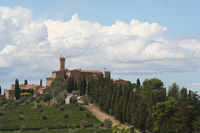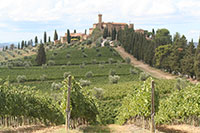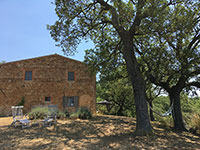| N L | Brunello di Montalcino vineyards, Montalcino [1]
|
Montalcino | Brunello di Montalcino |
Of Italy's twenty regions, none hold more fascination than Tuscany, with its rolling countryside thickly carpeted with vines and olive trees, and with its hillrowns topped with ancient castles and fortresses. Though parts of the region have not been immune to industrialization and development, much of Tuscany's quintessential landscape looks remarkably the same as it did when its hills and cypress trees were celebrated in numerous fourteenth- and fifteenth-century paintings. The cradle of the Renaissance as well as the birthplace of what has become the Italian language, Tuscany is also Italy's most internationally renowned wine-producing region, home to some of the world's most beloved Italian wines, including Chianti Classico, Vino Nobile di Montepulciano, and the greatest of all, Brunello di Montalcino [2]. To understand this unique wine, the best place to start is Montalcino itself, the spiritual home of Sangiovese, one of the world's noblest yet, at the same time, generally underrated grape varieties. Montalcino is Italy's greatest testament to the existence of terroir, and even though this is perhaps the most abused term in winespeak, it is the only explanation as to why this common vine can yield superlative results in designated parts of the denomination that it never attains elsewhere [2].
|
| Sangiovese Grosso (Brunello), de Sangiovese druif die de Brunello di Montalcino groot maakte [3] |
In the sun-drenched hills of Montalcino, where the whispers of the Tuscan breeze caress the vineyards, lies a tapestry of stories woven into the very roots of the earth. Here, amidst the undulating landscapes that seem to pulse with an ancient rhythm, the Brunello di Montalcino vineyards stand as sentinels of time. Of Italy's twenty regions, none hold more fascination than Tuscany, with its rolling countryside thickly carpeted with vines and olive trees, and with its hillrowns topped with ancient casdes and fortresses. Though parts of the region have not been immune to industrialization and development, much of Tuscany's quintessential landscape looks remarkably the same as it did when its hills and cypress trees were celebrated in numerous fourteenth- and fifteenth-century paintings. 1he cradle of the Renaissance as weIl as the birrhplace of what has become the Italian language, Tuscany is also Italy's most internationally renowned wine-producing region, home to some of the world's most beloved Italian wines, including Chianti Classico, Vino Nobile di Montepulciano, and the greatest of all, Brunello di Montalcino.[2] D.H. Lawrence would have found inspiration in the wild, untamed beauty of these vines, reaching out like passionate lovers clinging to the slopes. In every leaf, a sonnet of sunlight is written, and within each grape, the essence of the land is bottled.
|
Mappa Brunello di Montalcino
|
Amidst the olive groves and cypress trees, Lawrence would find a poetic resonance, a harmony that transcends the boundaries of time and space. In the Brunello di Montalcino vineyards, he might discover a narrative etched in the contours of the landscape – a story of struggle, resilience, and the undying connection between man and his sacred earth. |
||||||||||||||
Brunello di Montalcino vigneti, Monte Antico, Montalcino, Italy [3]
|
||||||||||||||
While Montalcino is synonymous with Brunello, the commune's growing area is also home to three other denominations: Rosso di Montalcino DOC, Moscadello di Montalcino DOC, and Sant'Antimo DOC. Besides these three Montalcino-only denominations, some producers also make wine under the Chianti Colli Senesi DOCG and the loosely controlled IGT Toscana [2].
|
||||||||||||||
Brunello di Montalcino, Tenuta Ciacci Piccolomini d'Aragona, Montalcino, con Monte Amiata sul sfondo [1] |
||||||||||||||
This extinct volcano that rises up to 1,738 m above sea level also plays a cooling role during the hot summer months, protecting the Montalcino area from extreme weather such as storms and hail. This huge mountain in central Tuscany, which was a volcano until 700,000 years ago, has a great influence on the area's climate. Indeed, clouds tend to move around Amiata, causing frequent rain and even hail all over the area, but not around Montalcino[6].
|
||||||||||||||
Map of the Brunello di Montalcino region
|
||||||||||||||
Map of the Member companies of the DOCG Brunello di Montalcino [1] Consorzio del vino Brunello di Montalcino | Digital map with all affiliated producers of Brunello di Montalcino
|
||||||||||||||
|
||||||||||||||
The following people were the founding members of the Brunello Consorzio in 1967, and the names appear in the order in which they appear in official documents relating to the incorporation of the Consorzio: Nello Baricci, Silvio Nardi, Siro Pacenti, Gino Zannoni, Lucia Perina, Milena Perina, Orazio Machetti, Elina Lisini, Dino Ciacci, Guglielmo Martini, Emilio Costanti, Sabatino Gorelli, Assunto Pieri, Manfredi Martini, Ivo Buffi, Giovanni Colombini, Rev. don Leopoldo Bianchi, Loffredo Gaetani Lovatelli, Giuseppe Cencioni, Bramante Martini, Leopoldo Franceschi, Pierluigi Fioravanti, Silvano Lambardi, Annunziato Franci, and Ferruccio Ferretti [2].
|
||||||||||||||
|
|
|||||||||||||
 |
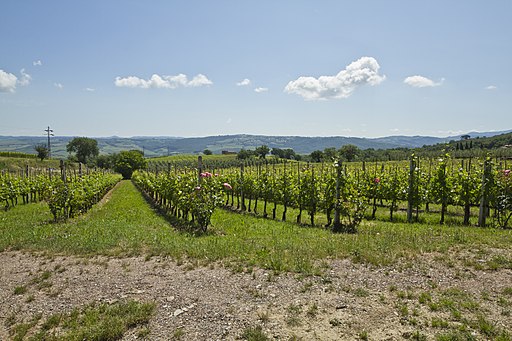 |
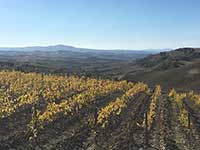 |
||||||||||||
Sangiovese grapes in a vineyard of Montalcino
|
Brunello di Montalcino vineyards, Montalcino
|
Some of the most particular estates of the Brunello di Montalcino territory
|
||||||||||||
Montalcino, Sagra del Tordo |
Caffè Fiaschetteria Italiana 1888, Montalcino, un polo d’incontro enologico e culturale dei produttori locali |
Brunello Wine tasting in Enoteca la Fortezza di Montalcino, a medieval castle in the heart of Montalcino) |
||||||||||||
| |
|
|||||||||||||
Il chiostro scoperto, il chiostro estivo del monastero, convento di Sant'Agostino, Montalcino
|
Tempio del Brunello, espressione dell’ispirazione e del lavoro creativo che la terra di Montalcino (Complesso Sant'Agostino, Montalcino)
|
L'Enoteca Bistrot del Tempio del Brunello nel chiostro scoperto
|
||||||||||||
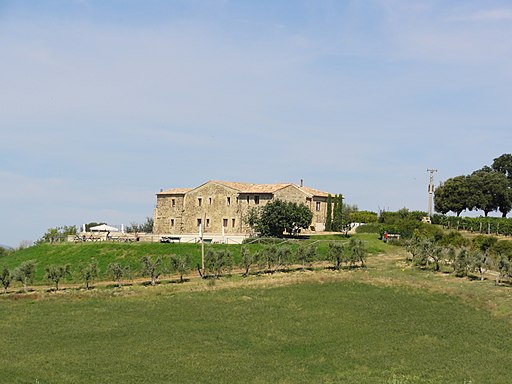 |
||||||||||||||
Poggio alle mura, Castello Banfi, Montalcino
|
Castello Banfi e vineti
|
Tenuta Il Poggione Sant'Angelo in Colle |
||||||||||||
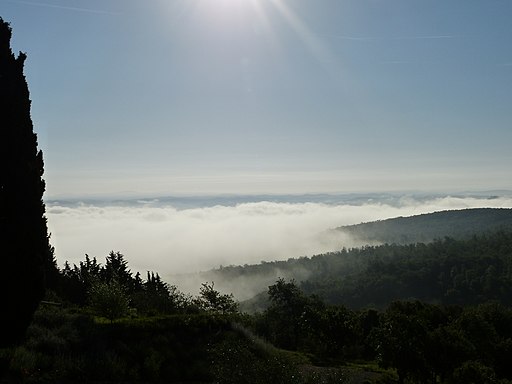 |
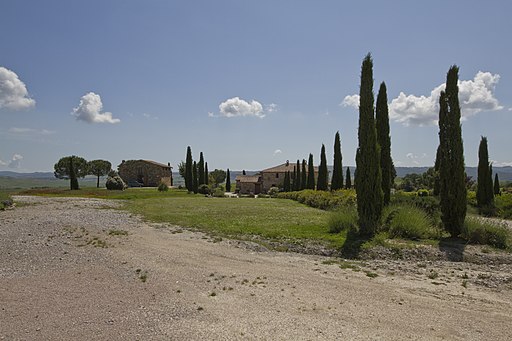
| 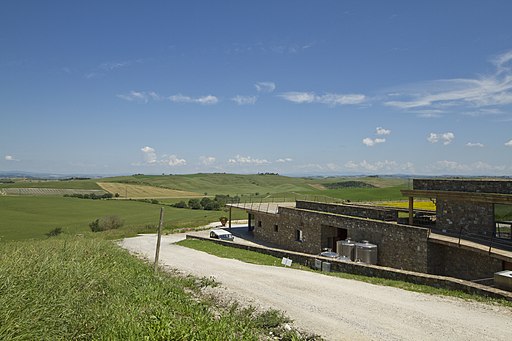 |
||||||||||||
Circular walk Montalcino - Abbey of Sant'Antimo
|
Casanova di Neri, Montalcino | Cantina Casanova di Neri, Montalcino |
||||||||||||
 |
 |
|
||||||||||||
Lucignano d'Asso |
|
Giro di Brunello di Montalcino (mbt)
|
Trekking in Tuscany. From Montalcino to Buonconvento |
|||||||||||
 |
 |
|||||||||||||
Brunello di Montalcino, Tenuta Ciacci Piccolomini d'Aragona, Vigna Ferraiole, Montalcino
|
Brunello di Montalcino vigneti, Monte Antico, Montalcino, Italy
|
Sangiovese is het overheersende blauwe druivenras in Toscane
|
||||||||||||
|
||||||||||||||
Podere Santa Pia, mystic holiday home in the heart of the Tuscan Maremma
|
Podere Santa Pia
|
Natuurhuis Podere Santa Pia, in de Toscaanse Maremma
|
||||||||||||
Early morning light at the private swimming pool at Podere Santa Pia, and a discreet touch of dolce vita, with the chic, high-quality, brightly coloured garden furniture from Emu
|
A bigger splash in swimming pool at Podere Santa Pia, southern Tuscany
|
Evenings around the pool in Tuscany offer a totally different quality of light and amazing colors
|
||||||||||||
|
|
||||||||||||||
 |
 |
 |
||||||||||||
Il Castello di Montalcino (Fortezza di Montalcino) |
Panorama con la chiesa di San Francesco |
Cypress trees between San Quirico d'Orcia and Montalcino
|
||||||||||||
 |
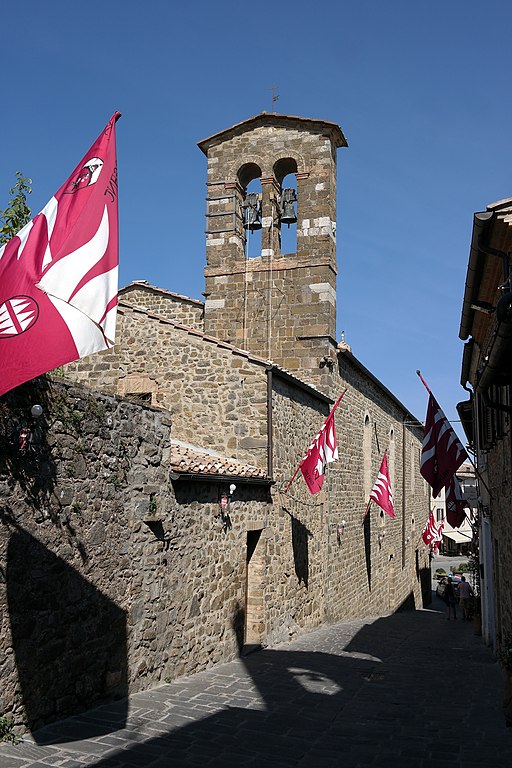 |
 |
||||||||||||
Palazzo dei Priori a Montalcino
|
Campanile a vela della Chiesa di Sant'Egidio a Montalcino
|
La chiesa di San Francesco, alla fine di via Ricci
|
||||||||||||
 |
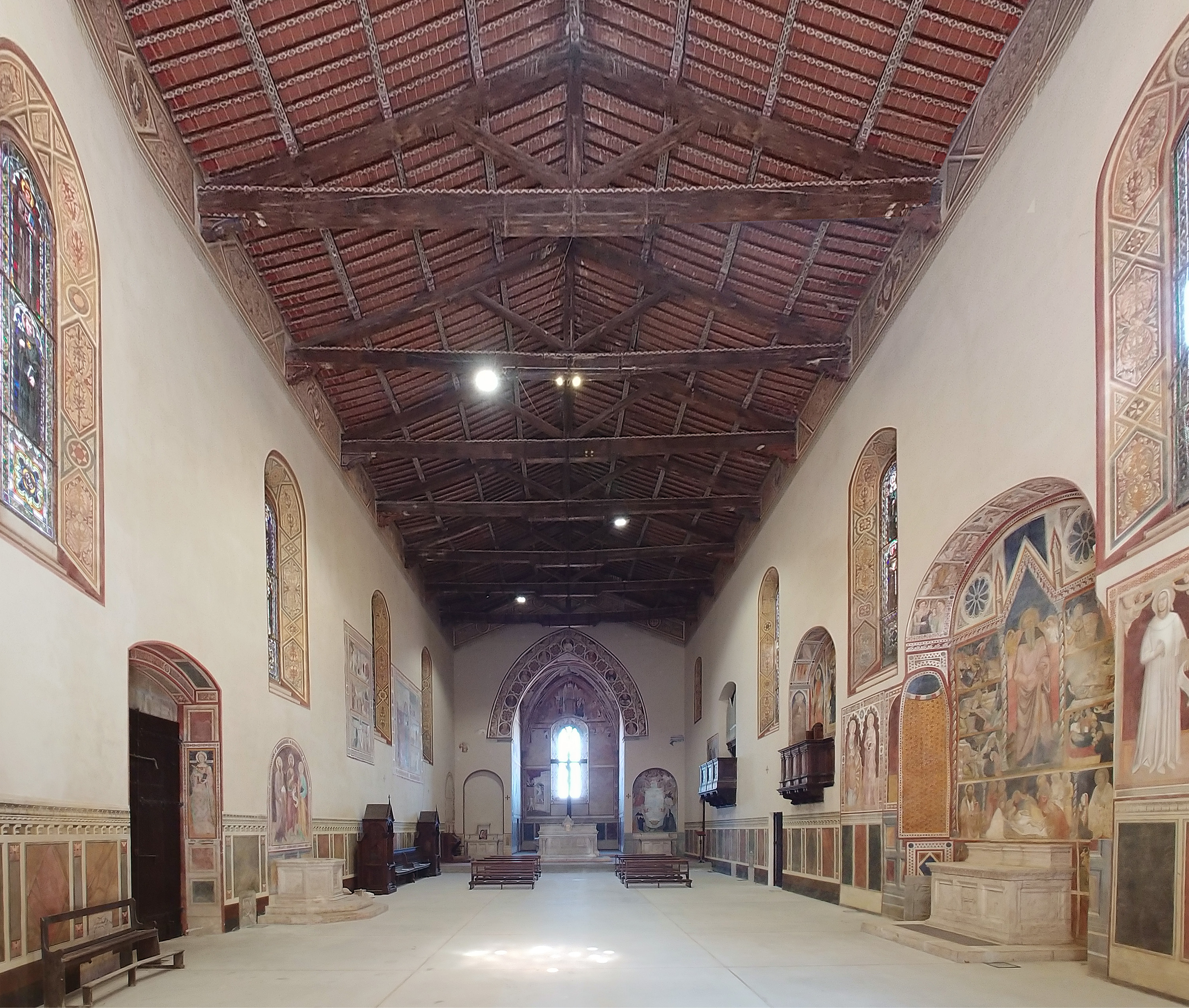 |
|||||||||||||
Chiesa di Sant'Agostino
|
Interno della Chiesa di Sant'Agostino a Montalcino, dopo il restauro
|
Museo Diocesano di Arte Sacra, convento di Sant'Agostino, Montalcino
|
||||||||||||
Frazioni Montalcino
|
||||||||||||||
 |
 |
|||||||||||||
Val d'Orcia album
|
Sant'Angelo in Colle
|
Panorama Sant’Angelo in Colle, Montalcino
|
||||||||||||
|
||||||||||||||

